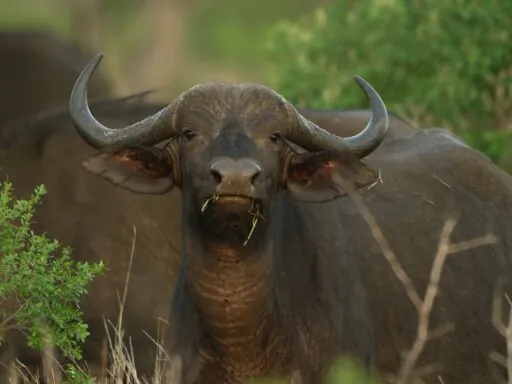Have you ever been curious about the largest sharks in the world? I know I have! There’s something thrilling about imagining these massive creatures gliding through the water, some as long as a school bus. From the gentle giants that filter-feed on tiny plankton to the fierce hunters that rule the deep, sharks are truly fascinating. In this article, I want to share my knowledge about the top 10 biggest sharks in the world. Together, we’ll explore their incredible sizes, where they live, and how they survive in our oceans.
1. Whale Shark
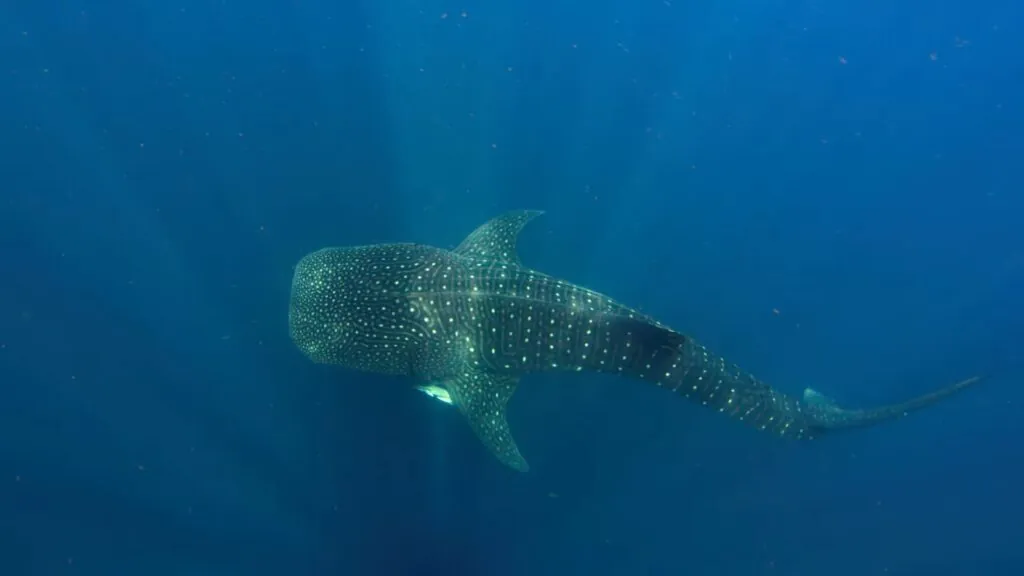
Whale sharks are truly fascinating creatures and hold the title of the largest fish in the world! They can grow up to 40 feet long, which is about the length of a school bus, and can weigh as much as 20,000 pounds – that’s like having two elephants swimming beside you!
In the face of their massive size, these gentle giants are filter feeders. This means they don’t hunt like most sharks. Instead, they open their mouths wide to suck in water and filter out tiny plants and animals like plankton, squid, and small fish. Each whale shark has a unique pattern of spots, much like human fingerprints, which makes them special and easy to identify.
2. Basking Shark
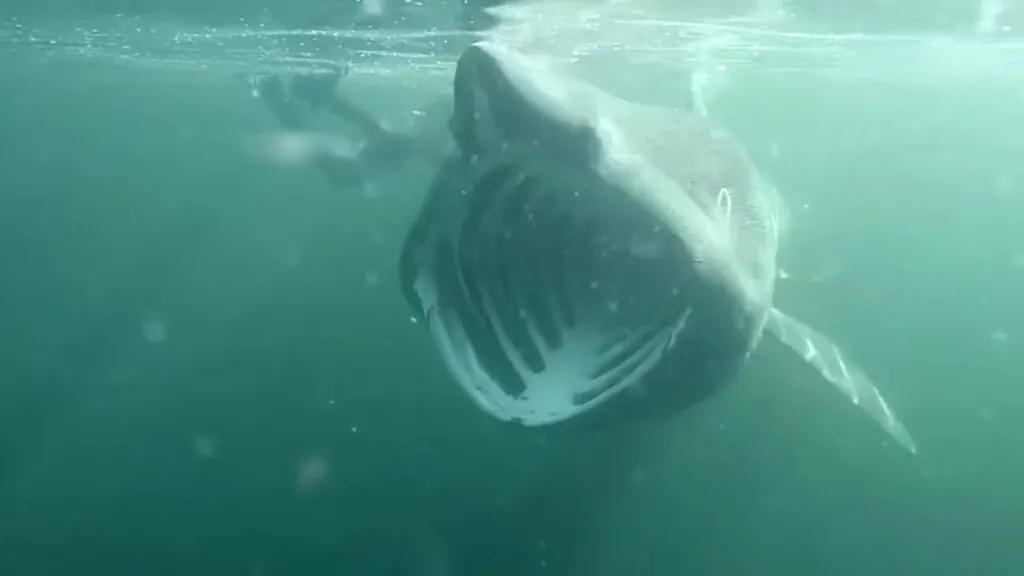
The basking shark is the second largest fish in the world, reaching lengths of up to 28 feet (about 8.5 meters) and weighing as much as 5,000 pounds (around 2,268 kilograms). This gentle giant is often seen swimming slowly near the surface of the ocean, where it opens its enormous mouth to filter feed on tiny creatures like plankton.
Amusingly, the basking shark has the smallest brain compared to its body size among all sharks, reflecting its calm and passive nature. Although it may look intimidating, basking sharks are harmless to humans and primarily feed on small marine life.
3. Megamouth Shark

The Megamouth Shark is a fascinating creature known for its enormous mouth and unique feeding habits. It can grow up to 18 feet (5.49 meters) long and weigh as much as 2,700 pounds (1,215 kilograms). This shark is less common than its larger relatives, the whale and basking sharks, and is a filter feeder, which means it eats tiny organisms like plankton.
The Megamouth has about 50 rows of teeth in its upper jaw and up to 75 in its lower jaw, but these teeth are small and not used for catching prey. Instead, it opens its massive mouth wide to gulp in water, filtering out food as it swims. You can find Megamouth Sharks in warm ocean waters around the world, from California to Japan
4. Tiger Shark
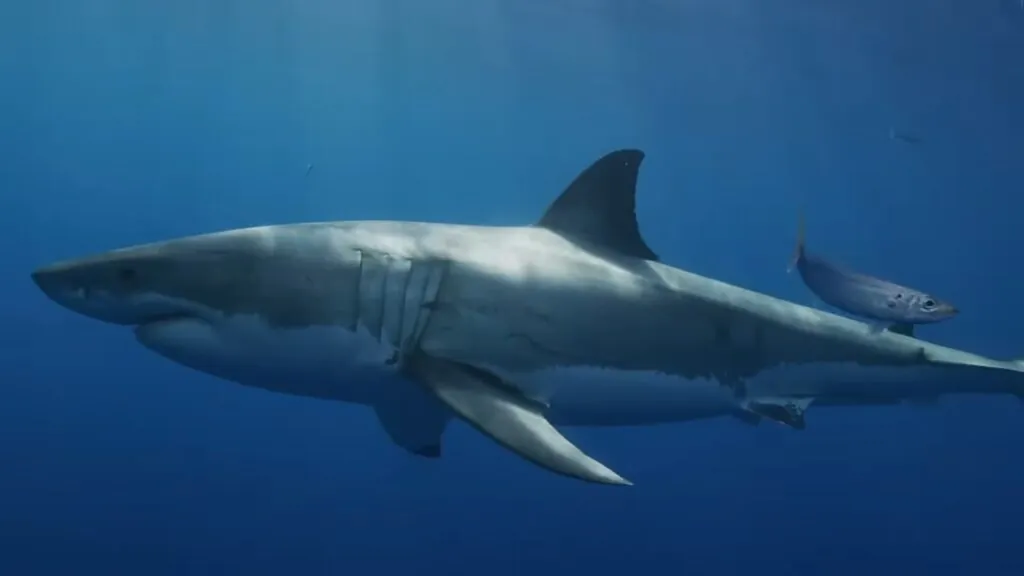
The tiger shark, known scientifically as Galeocerda cuvier, is one of the largest and most formidable sharks in the ocean. It can grow up to 18 feet (5.5 meters) long and weigh nearly 2,000 pounds (900 kilograms). These sharks are easily recognized by their unique vertical stripes, which are more prominent in young sharks and fade as they mature. Tiger sharks, one of the biggest sharks in the world, are aggressive predators, known for eating a wide variety of foods, including fish, sea turtles, birds, and even garbage. They are found in tropical and temperate waters around the world, often close to shore.
5. Greenland Shark
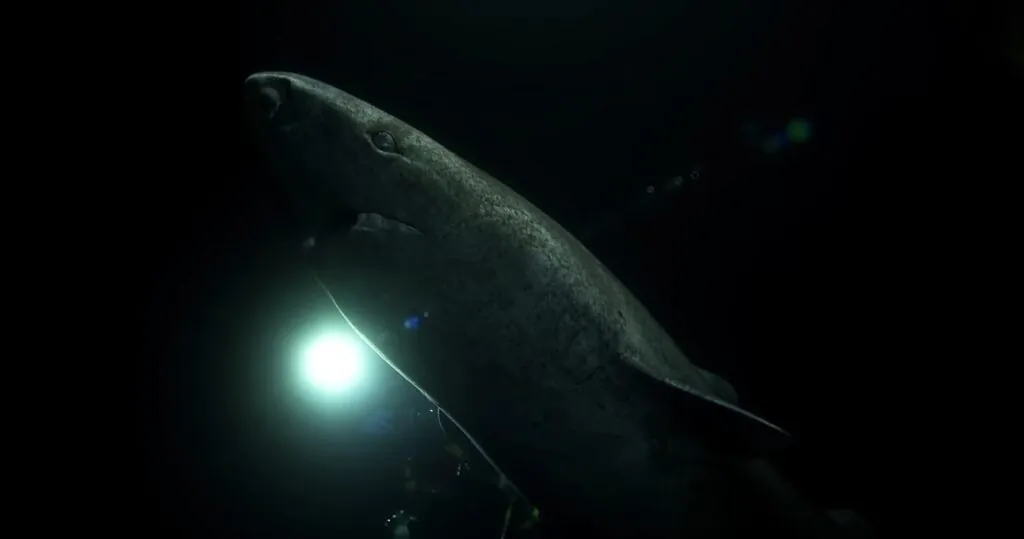
The Greenland shark (Somniosus microcephalus) is a remarkable species known for its impressive size and longevity. These cold-water sharks can grow up to 23 feet (7 meters) in length and weigh over 2,000 pounds, with some estimates suggesting they might reach weights of 3,000 pounds at their maximum size.
They are found in the Arctic and sub-Arctic waters of the North Atlantic, typically residing at depths of around 1,500 feet (450 meters), although they can dive much deeper. One of the most intriguing aspects of the Greenland shark is its incredible lifespan. Some individuals have been estimated to live between 272 and 512 years.
6. Great White Shark
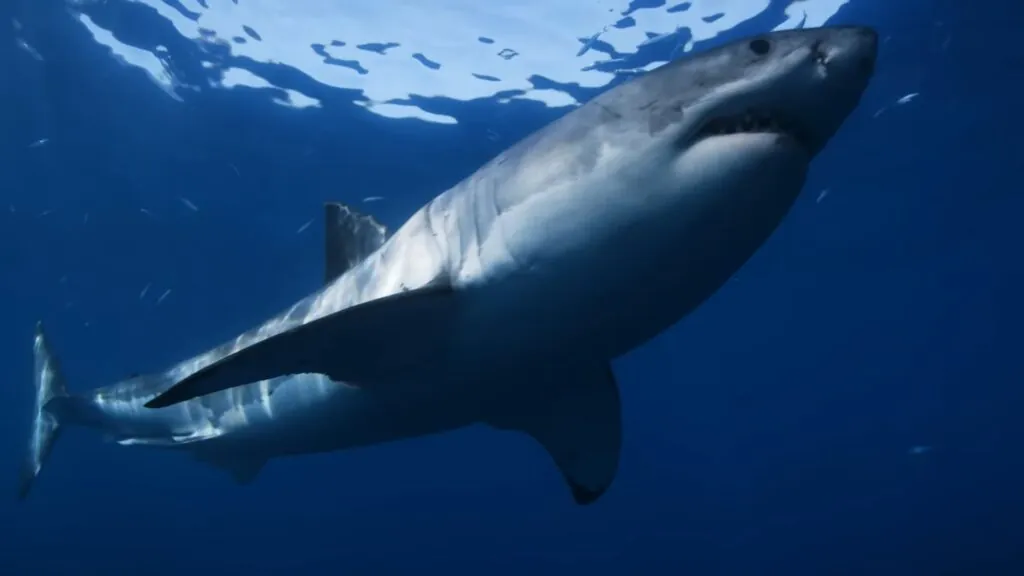
The Great White Shark, scientifically known as Carcharodon carcharias, is a formidable predator and the largest known predatory fish in the ocean, typically reaching lengths of 16 to 20 feet and weighing between 4,000 to 7,000 pounds. Renowned for its sharp, serrated teeth, the Great White is designed for hunting, employing a unique combination of excellent sense of smell and powerful, warm-blooded physiology that allows it to maintain energy and speed during its hunting bursts. These sharks primarily feed on a variety of prey, including fish, seals.
7. Great Hammerhead Shark
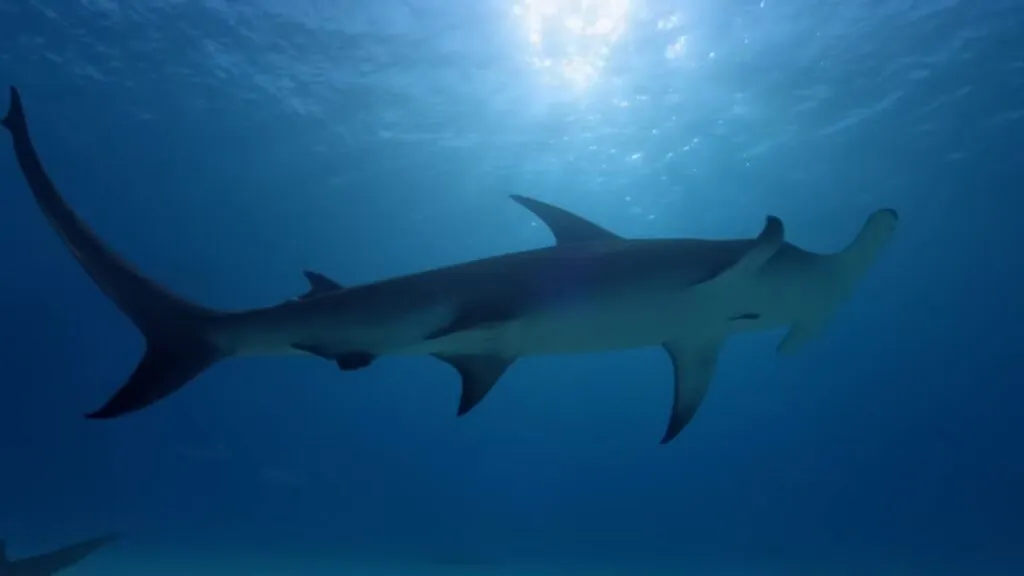
The Great Hammerhead Shark, one of the biggest sharks in the world, is a remarkable species known for its distinctive hammer-shaped head, which can reach lengths of up to 20 feet (6 meters). This unique head design is believed to enhance its sensory capabilities, allowing it to detect prey more effectively. Found in warm, tropical waters worldwide, the Great Hammerhead, one of the most dangerous sharks in the world, is often seen near coastal areas, and its diet primarily consists of fish, including rays and other sharks. They are known to be solitary or sometimes form schools, particularly during mating seasons.
8. Thresher Shark
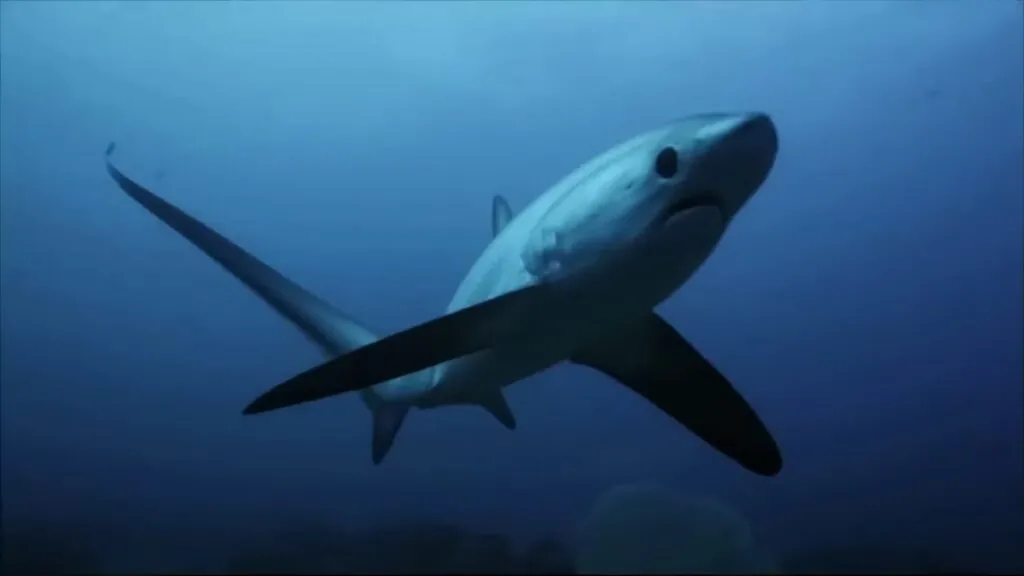
The Thresher Shark, known for its strikingly long tail, can reach impressive lengths of up to 20 feet (6.1 meters) and weigh between 500 to 775 pounds (227 to 352 kilograms). This unique anatomy aids in its hunting technique; Thresher Sharks use their elongated tail to slap schools of fish, stunning them before they make a rapid approach to feed. They are primarily found in tropical and subtropical waters, often residing at depths of up to 1,800 feet (550 meters).
While they are generally not a threat to humans – having recorded only one provoked attack – Thresher Sharks are fascinating for their speed. They are capable of swimming up to 30 miles per hour (48 kilometers per hour).
9. Bluntnose Sixgill Shark
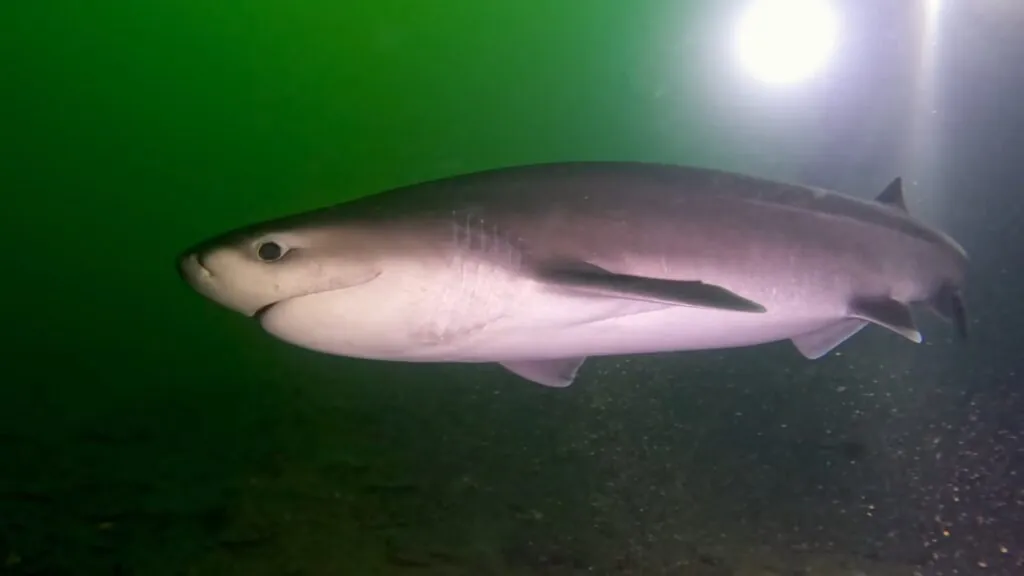
The bluntnose sixgill shark (Hexanchus griseus) is a fascinating creature known for its distinctive six gill slits, which set it apart from most other shark species. This impressive shark can grow to lengths of up to 18 feet (approximately 550 cm) and weigh as much as 1,300 pounds (590 kg). Males typically measure between 10.1 and 10.8 feet (309-330 cm), while females are larger, averaging 11.5 to 13.8 feet (350-420 cm).
Regardless of their massive size, bluntnose sixgill sharks are known for their relatively slow swimming speed, with estimates of their top speed being around 2.5 mph (4 km/h). These sharks inhabit deep waters, often found at depths exceeding 300 feet (90 m) and can dive to depths of over 6,000 feet (1,875 m).
10. Goblin Shark
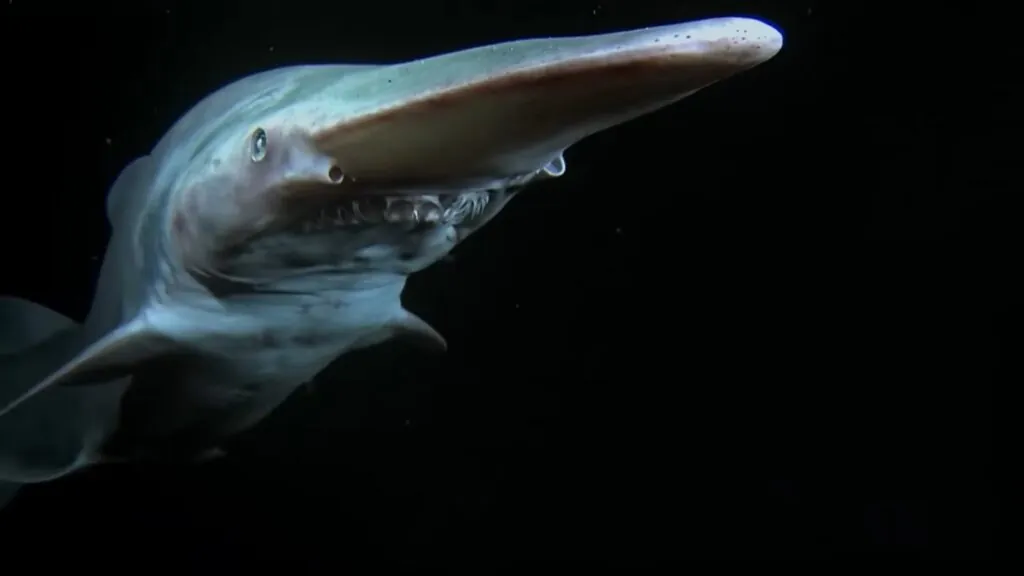
The goblin shark (Mitsukurina owstoni) is often called a “living fossil” because it has remained relatively unchanged for millions of years. This unique shark can reach lengths of up to 13 feet (about 4 meters) and typically weighs around 460 pounds (209 kg).
The most striking features of the goblin shark is its elongated, flattened snout and its ability to extend its jaw outward to capture prey. While it is not known for its speed, the goblin shark is believed to swim slowly, with estimates suggesting a top speed of about 3 mph (5 km/h). These sit deep waters, often found at depths of over 3,300 feet (1,000 meters), making them a rare sight for divers.
In this article, the ranking of the top 10 biggest sharks in the world was based on several key criteria: size, weight, and overall biological significance. We focused on sharks that are not only impressive in length but also in their ecological roles within marine ecosystems. Each shark was evaluated for its maximum size and weight, with consideration of their unique adaptations and behaviors.
